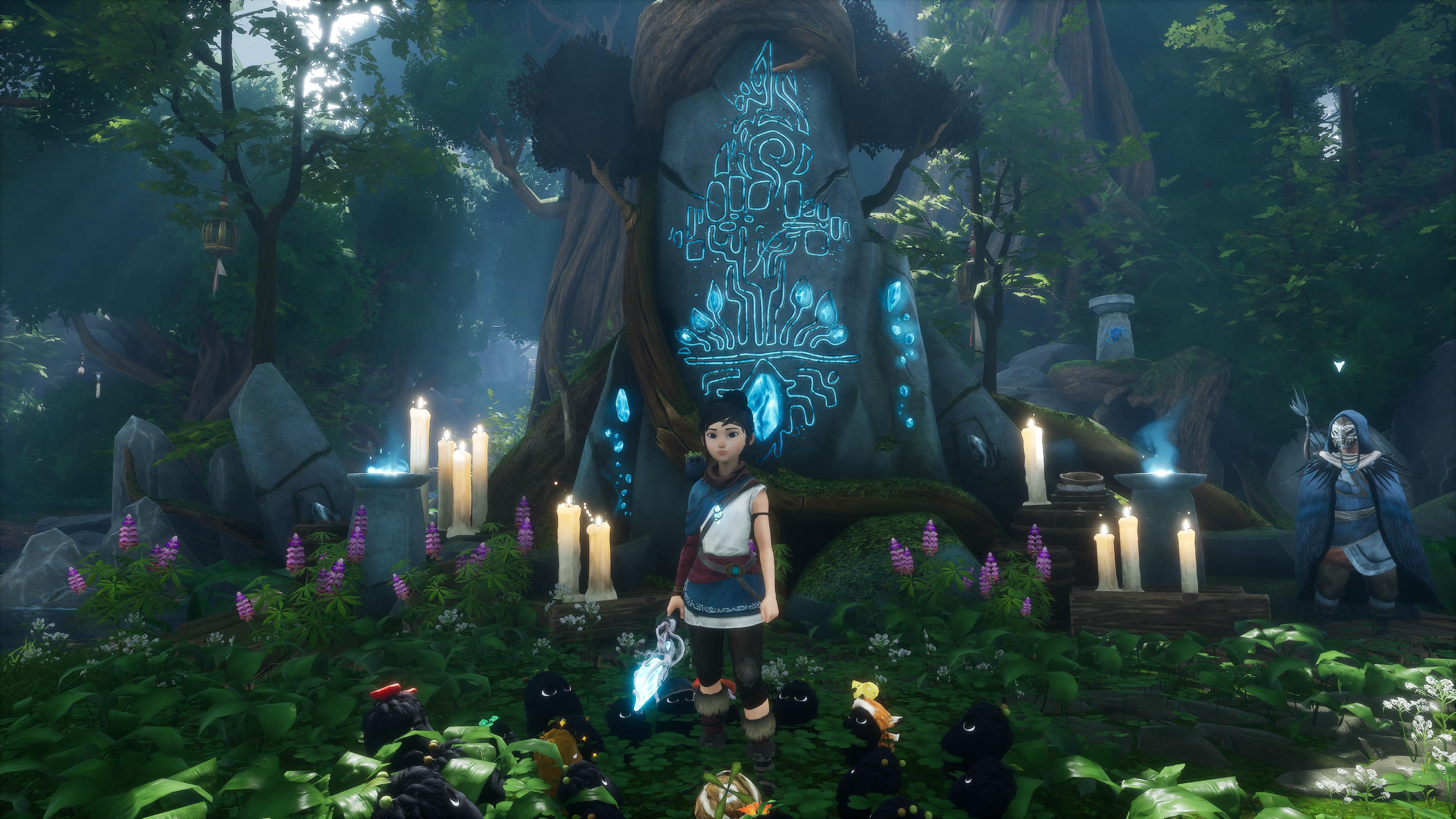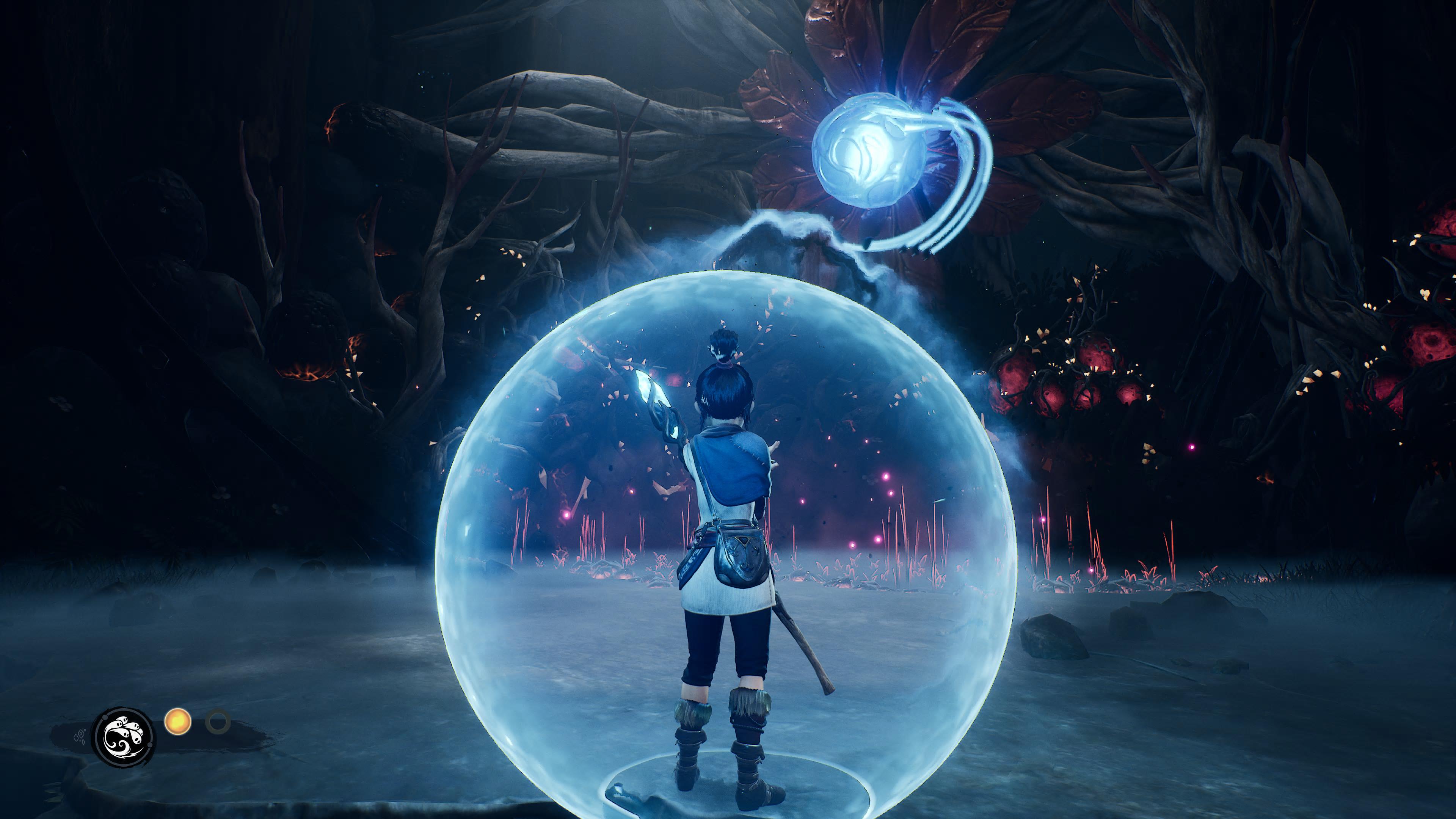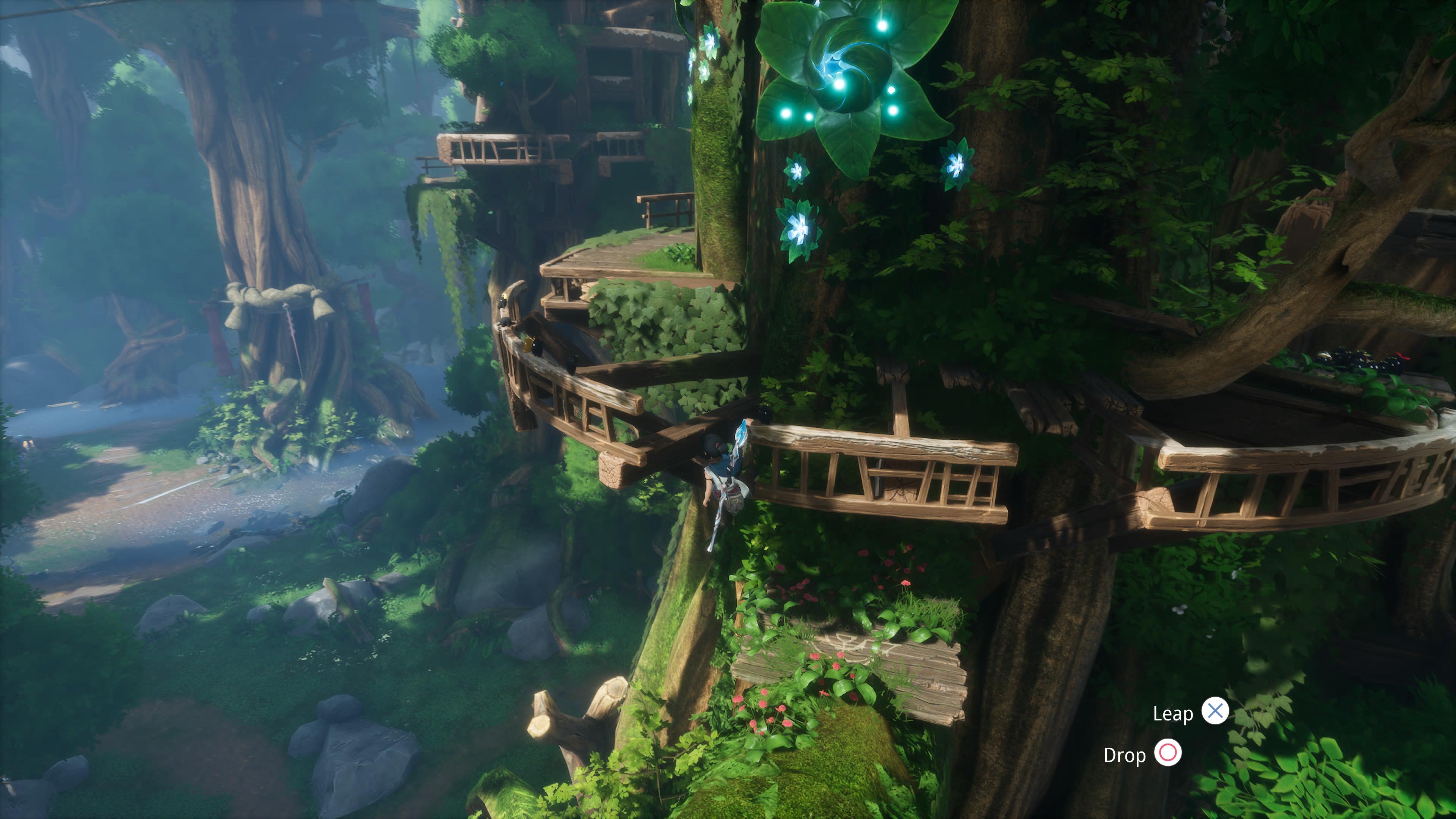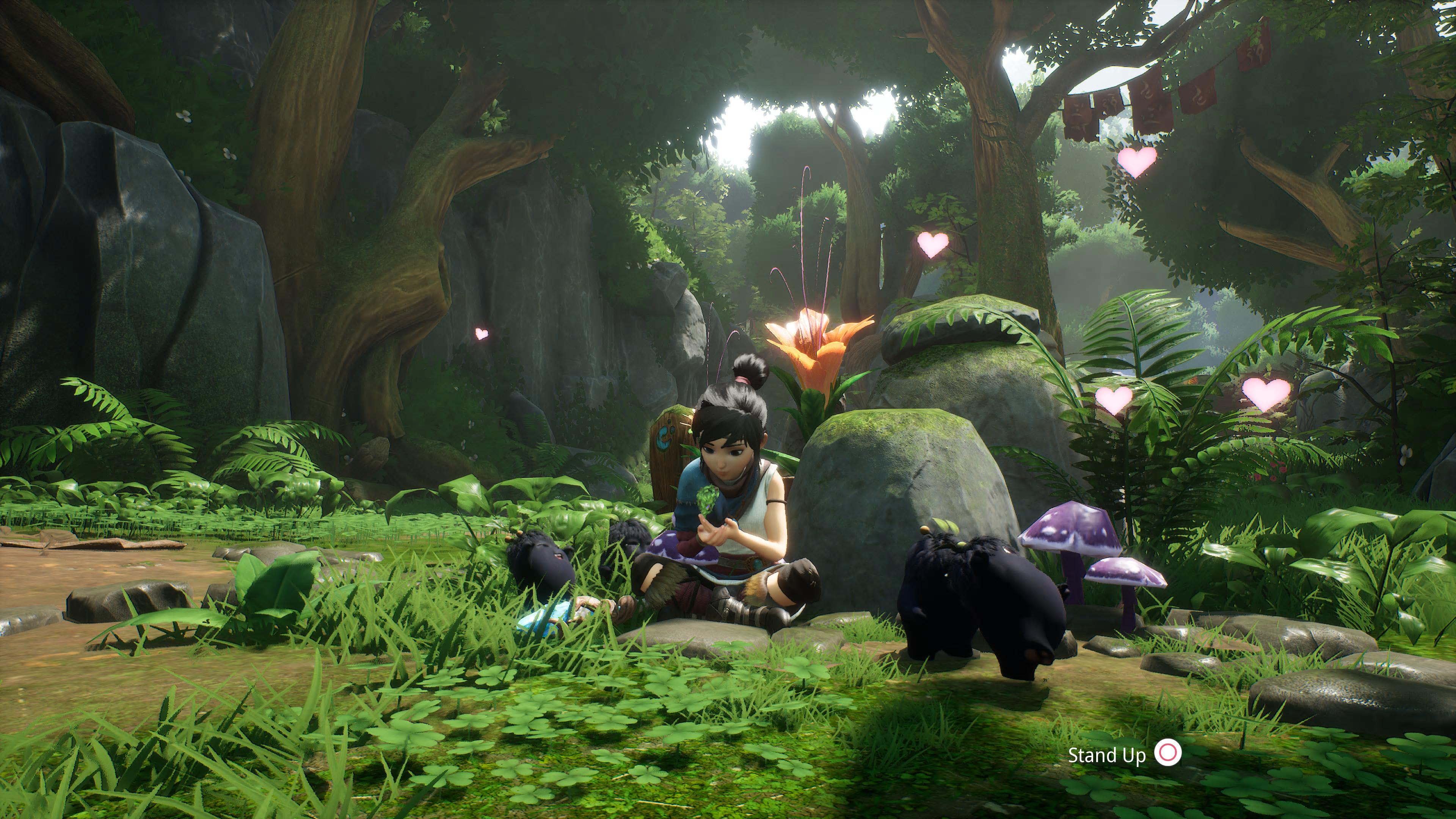Puzzles is perhaps a generous term for what you do outside of combat - mostly, the rot will carry a misplaced object such as a platform or an energy crystal to the right place for you to use. At certain points, rot can also temporarily transform into a large creature than can clear rot away that’s blocking a path. Generally, however, you travel the forest until you get to a large, rot-infested clearing, an enemy will spawn for you to defeat, and afterwards you will clear the rot away by destroying a large rot flower. Some of these areas will turn out to contain a boss - it’s kind of difficult to tell where, making boss fights seem less like special occasions and more like a way to break up the humdrum of fighting the same enemies in every clearing. Enemies will drop a spirits’ memento - once you’ve collected enough mementos, you can call the spirit, deal with their protests the old-fashioned way and then allow them to find peace. While Kena is also releasing on PC, this feels like a PlayStation game through and through - indeed it’s so reminiscent of Sony’s blockbusters of recent years that I’m surprised Sony has yet to buy developer Ember Lab. Sure, games aren’t made in a vacuum, but if you’ve played a decent number of games before it’s likely you’ll tire of the repetition of well-worn ideas here. This is a complex topic, but I needed to mention it in order to illustrate where my problem with Kena lies. This is a game that offers beautiful facsimiles of Zelda, Uncharted, The Pathless and Pikmin that glide by through its 10 to 15 hour running time. But playing Kena gets very boring, very fast. The fault may well lie with me due to my lack of patience with mechanically sound, but overly familiar games, but Kena tunnels you so smoothly from one end to the other that I was playing it as if on autopilot. Traversal is the largest part of the game - you navigate the forest by doing a light bit of platforming and climbing around on ledges that are all marked with the tell-tale splash of white paint. You restore ancient door’s opening mechanisms and defeat their guardians to get to your next objective. This is not a game with a lot of different actions - Kena wants you to wonder where to find something, rather than what to do with it. But that’s exactly where it fails for me. It borrows an incredible amount of ideas - the climbing from Uncharted, the shooting of your bow from God of War, the amount of collectibles from pretty much everywhere - but none of it is presented in a way that makes me think Ember Lab knows what makes a good puzzle, or an interesting platforming sequence. They borrow what’s undeniably worked, and will work again, yet fail to imbue it with much charm or purpose. Kena also feels very unbalanced. Standard encounters are over with the press of a few buttons, but boss battles always took me several tries, because no matter what your heroine withstands exactly three hits, while enemies would be able to snap to you from ridiculous distances. There’s a parry that’s fiddly and ineffective, and the combat ends up energy sapping. It’s that combat where those 3D Zelda comparisons come from, but Kena doesn’t hold up to the likes of Breath of the Wild. You can gain more skills for you and your rot by collecting more rot and thus gaining a rot level, and performing certain actions gains you karma, which you can spend on new skills. You can finish the entire game without looking for these collectibles, but without a few new skills, Kena simply gets too repetitive. I’m not a fan of binding game progress to collectibles, but unless you’re a completionist, there is little reason to all the collecting, either. This is a beautiful-looking game, no doubt - after all, Kena was made by the animation studio behind the superb Majora’s Mask fan short film. But, as beautiful as it is, here too I fear Ember Lab simply took a little of what everyone likes and put it in their game. Their character design presumably aims for a certain Pixar charm, but it made it difficult for me to tell if all these characters with Japanese names were in fact Japanese. That’s a small niggle, the bigger issue for me is Kena’s iconography. The game uses Japanese Inari and Jizo statues and iconography, as well as Balinese influences and mixes them, presumably because they look cool, because due to missing worldbuilding, none of it is referenced anywhere. I always get a bit uncomfortable when religious practice or ideas such as karma are used as game mechanics, completely untethered from any meaning. You may not care, but in real life, these things mean something to people, something which, judging by their vitae, Ember Lab are aware of. To me, Kena: Bridge of Spirits very much has first game syndrome - something with all the right ideas, weakened by their execution. If it does well - and given the fever with which it’s been followed leading up to its release, I expect it will - it’ll be because we often value AAA looks and mechanics more highly than attempts at innovation. I’m sure with this foundation Ember Lab has a great game in it, but this isn’t it just yet.



